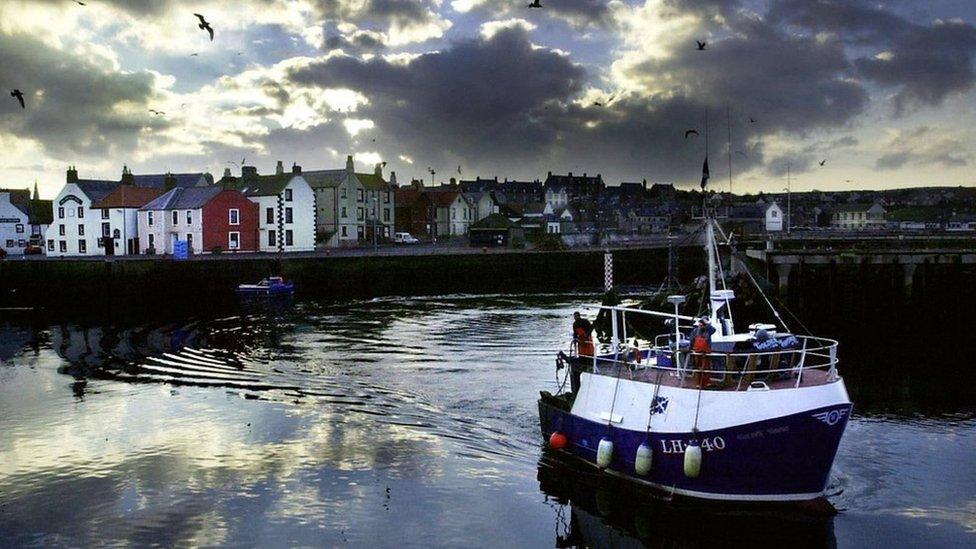Seabirds following of fishing boats studied in Scotland
- Published

Seabirds in the study were found to spend from 10 minutes to more than seven hours with fishing boats
Scientists have studied seabirds' following of fishing boats in Scotland to develop a system for the analysis of foraging trips by animals.
The researchers applied their modelling framework to GPS tracked fulmars that hunt for fish around Orkney and off Scotland's north mainland coast.
They were able to identify occasions when birds switched from foraging to following a boat.
Fulmars did this to find the same fish as the trawlers or pick up discards.
The birds were found to spend as little as 10 minutes to more than seven hours interacting with fishing boats.
In a new research article , the scientists said the framework could be applied to other animals that might switch from foraging to heading towards human activity that may offer the chance of a meal.
Scientists from the Department of Mathematics and Statistics at Washington State University, University of Aberdeen's Lighthouse Field Station in Cromarty and Marine Scotland worked on the study.
'Change behaviour'
Dr Ewan Edwards, who was involved in the research as a University of Aberdeen PhD student at the Lighthouse Field Station, said it had long been suggested that the increase in the fulmar population seen in the 20th Century in Scotland was the result of an expansion in the fishing industry.
He said: "This is because fulmars are often seen scavenging on offal discarded by fishing vessels in north-west European waters.
"This study has shown that, indeed, fulmars appear to change their behaviour from travelling to foraging in the vicinity of fishing vessels, which may indicate that waste from these boats provides a food resource."
Dr Edwards added: "Whether fisheries discharge or discards are a particularly important food source for fulmars is still unclear.
"This study does, however, provide a useful framework to describe animal movement, which is not only of interest in the example of fulmars and fishing vessels, but could be applied to other species."